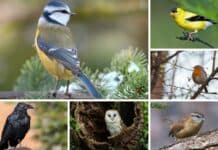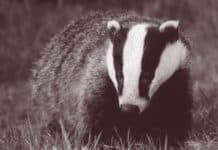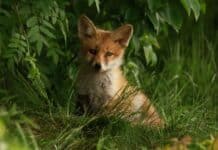Owls feature prominently in Welsh and wider Celtic folklore, says CLAIRE BARRAND

In Celtic mythology, the owl was a sign of the underworld.
Its cry is said to signal approaching death and misfortune.
The Owl was linked to the dead and called the Night Hag or Corpse Bird.
Folk would only discuss the bird with hushed tones for fear of attracting darker forces.
Unquestionably and indisputably a creature of the dark, beautiful wise and nearly always female in folklore, the Owl is one to respect and folk would take care not to talk ill of her.
Sometimes she is seen as the bird of Gwyn ab Nudd, the King of the Faerie (Tylwyth Teg).
With death there comes new beginnings and so the Owl is also a symbol of renewal, moon magick, and reincarnation.
Celtic Goddess of fertility rebirth and cosmic time and fate, Arianrhod shape-shifted into an owl where she could see deep into the human subconscious and soul with her eyes.
In Lady Charlottes Guest’s 1877 translation of the 12th Century Mabinogian, the Owl was described in detail.
In the famous tale, Math Son of Mathonwy, the God-like figure Gwydion wants a bride for his nephew, Lleu.
However, because of a curse, this cannot be a human bride, and so Math and Gwydion decide to create a woman out of flowers.
They call her Blodeuedd meaning “flower face”.
However, when she betrays Lleu, Gwydion curses her in anger and revenge with a spell to turn her into an owl, never showing her face in daylight and forever tormented by other birds.
In 1881’s British Goblins by Wirt Sikes, it states:
“This corpse bird may properly be associated with the superstition regarding the screech-owl, whose cry near a sickbed inevitably portends death.”
Up until the 1950s, farmers would nail a dead owl to barn doors to ward against evil. Often also thought to ward off storms.
Owls are magical and should not be disturbed
In another Welsh folklore story, it was said that in the 19th century in Cwmcarvan, an extraordinarily large white owl was often spotted over an ancient battlefield, leading inhabitants to believe the bird was magical and should never be disturbed.
One day, however, a visitor to Raglan Castle mocked the story and slaughtered the owl, only to die a few hours later, choking to death at a dinner table.
If you see an owl in your dreams, it is said to be bringing you messages of enlightenment so pay attention.
Owls can see what others cannot and are the essence of true wisdom.
If you are being deceived, maybe the owl can perceive what you cannot and with its ancient knowledge can help you make changes using its intuition and spiritual wisdom.
There are five species of owl in Wales, those being the Barn Owl, Little Owl, Short-Eared Owl and the Tawny Owl.
Long-Eared Owls can be found in North Wales.
Screeching in graveyards
The screech you hear in graveyards at night is most likely to be that of a barn owl which hunts at night and loves high church towers where it is away from predators.
Sadly, due to the destruction of habitat and the use of pesticides, many of these stunning creatures are struggling to survive.
If you find a baby owl this spring, then the advice is to please leave it alone, as this is its best chance of survival.
Many people want to help injured or orphaned owls in Wales, and The Owl Trust has a team of trained specialists to advise and rehabilitate many of these birds back into the wild.
You can find out more from The Owl Trust on how to adopt or donate here.









